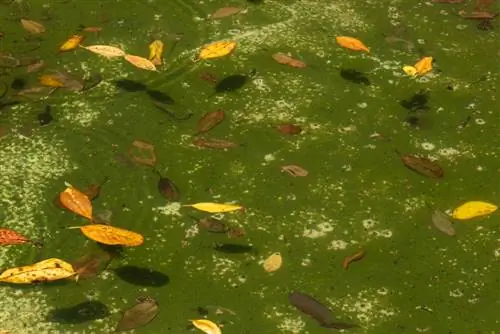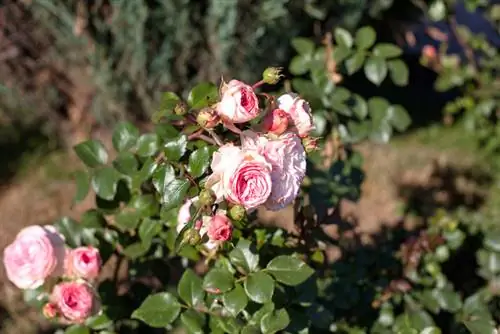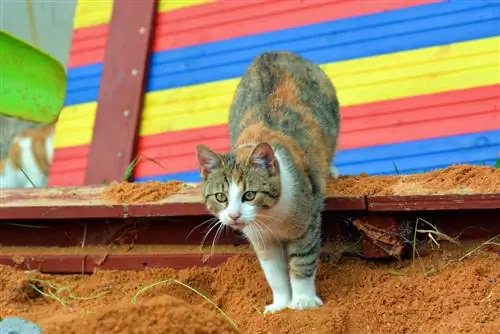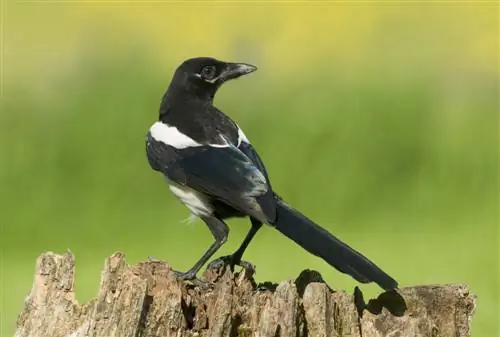- Author admin [email protected].
- Public 2024-01-05 20:48.
- Last modified 2025-06-01 06:02.
The rhododendron is one of the most popular plants in the garden and park. Its diverse shape, evergreen leaves and colorful blossoms delight every garden lover. In order to maintain he althy growth in the heather family, damage such as brown leaves or brown spots must be recognized and treated in a timely manner.
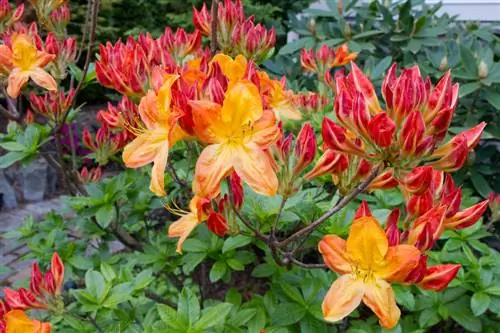
What causes brown leaves on rhododendrons and how do you treat them?
Rhododendron brown leaves can be caused by thirst, frost damage, sunburn or fungus. To remedy the situation, you should water the plant, protect it from frost and sun, adjust the location and, if necessary, use fungicides in the event of fungal infestation.
Location, soil and weather damage
Despite proper care and optimal location, brown leaves and spots can affect the rhododendron. In order to take effective measures, you need to know what causes the diseases.
Brown yellowish curled leaves - Rhododendron is thirsty:
Before the rhododendron dies of thirst, it rolls up its leaves. With this protective measure it reacts to long dry periods in summer or to dry, cold winter weather.
What to do? When watering, do not wet the leaves to avoid sunburn. In winter, only water on frost-free days to avoid causing frost damage. A layer of bark mulch keeps the root area frost-free for longer.
Rhododendron brown leaves and brown edge - frost damage
In dry, cold and windy winter weather, more sensitive, less hardy rhododendron varieties are at risk of frost damage. Recognizable by dead flower buds or brown leaves and leaf edges.
What to do? Cover with pine brushwood or reed mats as additional wind and cold protection. Cut back severe frost damage in spring.
Brown yellowish leaf blades - sunburn
When sunburned, unshaded leaf blades turn brown-yellow. Shaded leaves do not show any damage. What to do? Shade the rhododendron or transplant it to a partially shaded location without midday sun. Check the leaves regularly as the weakened plant is at risk of fungal attack.
Damage caused by fungi and mold
Differently shaped, brown spots on rhododendron leaves can cause up to 20 different fungi or rust and mold infestation. Only a microscopic examination provides a detailed diagnosis of the cause.
Rhododendron brown leaves and brown buds
The cause is usually fungal diseases such as
- Phytophthora
- Botryosphaeria
- Phomopsis
All three fungal diseases spread quickly. But they rarely threaten the entire plant. When Phytophthora infestation occurs, for example, the midribs of the leaves turn brown. The infection spreads from the inside out and the leaves wilt.
Brown tips, brown leaf edges - leaf spot:
The causes of this disease are various weakness parasites. The first clues are irregular brown spots on the edge or tip of the leaf.
Brown spotted leaf tip with mold - gray mold rot:
If brown spots with a grayish mold coating appear on the tip of the leaf, this is gray mold rot. The infestation spreads across the entire leaf. There is a risk of infection, especially in warm, humid weather
What to do? Choosing the right location, good plant nutrition and checking leaves can help preventatively. If infested, treatment with fungicides is required at intervals of around 10 days. Collect defective, discarded leaves and dispose of them with household waste.
Tips & Tricks
Stay away from rhododendrons with brown leaves or yellow leaves, these are indications of disease or nutrient deficiency.


